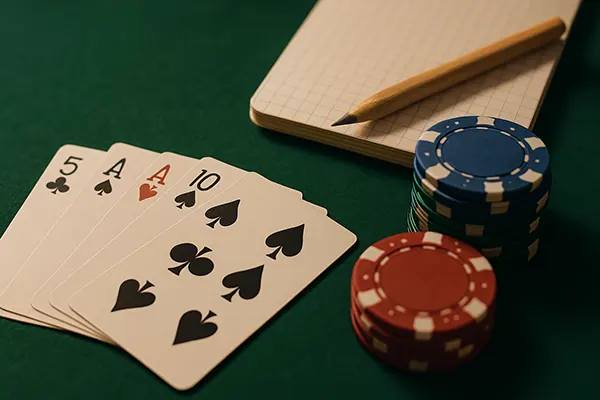
Poker and Mathematics: How to Use Pot Odds for Better Decisions
In the world of poker, success depends not only on intuition and experience but also on the ability to calculate probabilities. Mathematical concepts such as pot odds allow players to assess whether a call, fold, or raise is justified based on the potential return. This article dives deep into how understanding pot odds can transform your approach to poker and give you a competitive edge.
Understanding Pot Odds in Poker
Pot odds represent the ratio between the current size of the pot and the cost of a contemplated call. They allow players to determine whether a particular decision is mathematically profitable in the long run. For example, if the pot is £100 and your opponent bets £20, you are being offered 5-to-1 pot odds. This means you need to win at least once in six times (about 16.7%) to make calling worthwhile.
Calculating pot odds requires basic arithmetic but offers profound strategic insights. By comparing pot odds with the probability of completing your hand—also known as your ‘outs’—you can assess if a decision aligns with expected value. Players who internalise these calculations develop a more disciplined and data-driven style of play.
Pot odds are not just for advanced players; even beginners can benefit from understanding the concept. Many mobile poker apps and online platforms now offer integrated pot odds calculators, helping players make quick decisions under pressure. By learning to think in these terms, you eliminate guesswork from your game.
How to Calculate and Use Pot Odds Effectively
To use pot odds, start by identifying your outs—cards that can improve your hand. Suppose you have four cards to a flush after the flop; there are 13 cards of each suit, and you’ve seen four already. That leaves nine outs. Multiply your number of outs by two after the flop (or by four on the turn) to get a quick estimate of your percentage chance to hit the draw.
Next, compare that percentage with your pot odds. If your pot odds offer a higher return than the risk based on your hand odds, it’s a profitable call. Let’s say you have a 36% chance to complete your flush, and the pot odds are 2-to-1 (33%). In this case, calling is justifiable because the expected return outweighs the cost.
Many experienced players go a step further by factoring in implied odds—the potential future bets you could win if your draw completes. This adds an extra layer of complexity but can turn a borderline decision into a long-term value play when considered carefully.
The Role of Equity and Expected Value
Equity refers to your share of the pot based on the probability of winning at any given moment. If you’re all-in and have a 60% chance to win, your equity is 60% of the pot. Understanding this helps you evaluate whether you’re ahead or behind and adjust your betting strategy accordingly.
Expected value (EV) takes things one step further by measuring the average amount you expect to win or lose per decision. If you consistently make positive EV plays—where your expected gains exceed the risk—you’ll be profitable in the long run. Pot odds are a core component of this calculation.
For instance, imagine you’re facing a £50 bet in a £150 pot. That gives you pot odds of 3-to-1. If your draw hits 25% of the time and you win £150 when it does, your EV is positive: (0.25 × £150) – (0.75 × £50) = £37.50 – £37.50 = £0. In borderline cases like this, any implied odds or fold equity can tilt the decision towards profitability.
Combining Pot Odds with Other Strategies
While pot odds are essential, they should not be the sole factor in decision-making. Skilled players also consider player tendencies, position, betting patterns, and psychological factors. Pot odds provide a foundation, but successful poker involves synthesising all available data.
Combining pot odds with fold equity—how often your opponent might fold—allows you to turn marginal hands into winning plays. A semi-bluff with a drawing hand becomes more viable when there’s a chance your opponent will fold to your aggression.
Players who rely too heavily on pot odds without considering other dynamics risk becoming predictable. Mixing mathematical discipline with strategic creativity is what separates good players from great ones. Ultimately, your ability to adapt while staying grounded in probability determines your long-term success.

Common Mistakes and How to Avoid Them
One of the most common errors players make is miscounting outs, especially when some cards may complete your hand but also improve your opponent’s. This results in ‘tainted outs’—cards that appear helpful but are actually dangerous. Double-checking the board and hand ranges can prevent costly mistakes.
Another frequent issue is misunderstanding pot odds as guarantees rather than guidelines. Just because you are getting favourable pot odds does not mean a call is always correct. The broader game context, including position, opponent skill level, and stack sizes, must be factored into the equation.
Finally, newer players often forget to account for bet sizing when calculating pot odds. Misjudging the true cost of a call skews your decision-making process. Ensuring accurate calculations helps maintain discipline, especially during high-pressure situations.
Practical Tools and Resources for Players
In 2025, numerous poker tools exist to help with pot odds and decision-making. PokerTracker, GTO Wizard, and Equilab remain among the most popular, offering real-time analysis and hand review capabilities. These programs allow you to simulate different scenarios and evaluate your choices against optimal play.
Many training platforms now offer modules specifically focused on pot odds and equity. Whether you’re using interactive video lessons or downloadable charts, these resources enable players to strengthen their understanding and apply concepts in live games.
Beyond tools, disciplined practice remains key. Reviewing hand histories and discussing tough spots with other players on forums or in study groups accelerates improvement. The more you practise applying pot odds in real scenarios, the more natural and effective your decision-making becomes.

